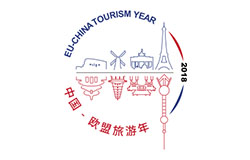The EU-China Tourism Year seems to deliver visitors
 Europeans and Chinese are visiting each other in increasing numbers. The European Travel Commission (ETC) today reported that the EU-China Tourism Year, a major strategic political initiative, designed to promote Europe as a destination to the rapidly-growing Chinese tourism market, is delivering the tourism growth intended.
Europeans and Chinese are visiting each other in increasing numbers. The European Travel Commission (ETC) today reported that the EU-China Tourism Year, a major strategic political initiative, designed to promote Europe as a destination to the rapidly-growing Chinese tourism market, is delivering the tourism growth intended.
Its report is based on a study of Chinese travel to the European Union (EU) countries undertaken by ForwardKeys, which monitors over 17 million flight booking transactions a day.
For the first eight months of 2018, Chinese arrivals in the EU were 4.0% up on the same period in 2017. Growth in the first four months was up by 9.5% and in the second four months, up by 2.2%.
Looking forward to the last four months of the year, Chinese bookings to the EU are currently 4.7% ahead of where they were at the same point last year. This is a relatively encouraging position, since outbound bookings from China to the rest of the world are currently 3.6% ahead.
When analyzing source cities, it is apparent that the recent growth is coming from the Hong Kong and Macao SARs and tier-2 Chinese cities. During May-August, growth from Hong Kong and Macao was 5.1%, while arrivals growth from Chengdu, Hangzhou, Shenzhen and Xiamen was 13.5%. The outlook for the remainder of the year is similar but amplified. Bookings from the tier-2 cities are 22.6% ahead of where they were at the same point last year; bookings from Hong Kong and Macao are 6.8% ahead and bookings from the tier-1 cities are just 1.4% ahead.
Different parts of the EU are growing in terms of Chinese visitors at very different rates, with the stand-out sub-region being Central/Eastern EU. Over the second third of the year (May-August), Chinese arrivals in Central/Eastern EU were 10.3% up on 2017 and the outlook until the end of December, based on current bookings is 9.4% ahead. As one of the objectives for the EU-China Tourism Year included the promotion of lesser-known destinations, these numbers indicate the further success of the initiative. Top performers in the region were Estonia and Bulgaria, with increases in Chinese arrivals of 45.3% and 43.4% respectively. The outlook until the end of the year is encouraging for both destinations, with bookings ahead 48.2% and 21.6% respectively.
By contrast, arrivals in Northern EU, during the second third of the year, were disappointing -0.6% down on 2017. The least optimistic outlook for the last four months of the year is currently for Western EU, where Chinese bookings are 2.5% ahead of where they were at the equivalent moment in 2017.
The star performer in the Southern EU is Croatia. Chinese arrivals in May-August were up 46.2% and the outlook for September-December, based on current bookings, is 66.4% ahead.
An analysis of future travel reveals that the outlook, in terms of Chinese bookings to the UK for the last four months of the year, is just 0.6% ahead of where it was last year. Consequently, if the UK were to be excluded from the figures, Chinese travel bookings to the EU would be 5.7% ahead rather than 4.7% ahead, which is the figure for the EU as a whole.
Two important festivities for Chinese outbound travel this year are China’s Mid-Autumn Festival and the National Day Golden Week (18 September to 8 October). Currently, Chinese bookings to the EU are 0.6% ahead of where they were for the equivalent period last year, which does not sound particularly exciting; however, considering that Chinese outbound bookings to other long-haul destinations are 3.6% behind, the EU seems to be performing relatively well.
The best performing EU destinations during this period are set to be Sweden, 26.3% ahead, Austria, 13.1% ahead and the Netherlands, 8.7% ahead. The stand-out non-EU destinations during October Golden Week are Serbia, Turkey, and Montenegro, where current bookings are ahead 174.9%, 86.5% and 49.1% respectively.
Eduardo Santander, Executive Director European Travel Commission said: “Whilst the numbers we are reporting for the May-August period are not quite as strong as the January-April period, the growth in Chinese travelers has been solid and the near future, judging by current bookings, will see the EU continuing to increase its share of the valuable long-haul Chinese traveler market.”
source: eTN




